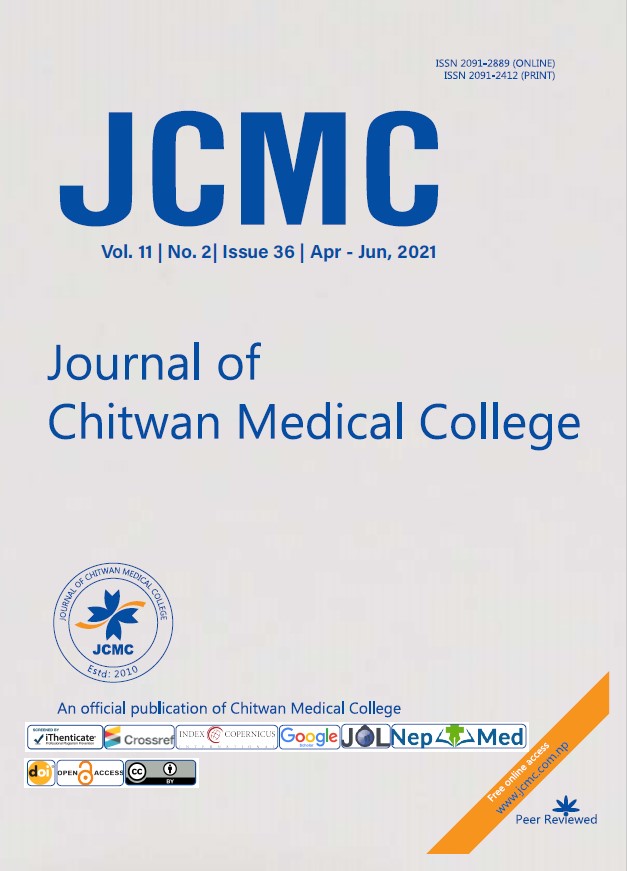Diagnostic stability of dissociative disorder during five year follow-up in tertiary hospital of Nepal
Keywords:
Diagnostic stability; Dissociative(conversion) disorder, Territory hospital.Abstract
Background: The stress on unconscious mind converted to physical symptoms or the dissociation of stress in to physical symptoms, called dissociative (conversion) disorder. The aim of the study was to identify diagnostic stability of dissociative (conversion) disorder during five years follow-up among patients with dissociative (conversion) disorder attending psychiatry department of Chitwan Medical College Teaching Hospital, Bharatpur, Nepal.
Methods: A prospective follow-up study was conducted among 253 patients with dissociative (conversion) disorder attending in the department of psychiatry of CMC-TH. Consecutive sampling technique was used to select the sample and data was collected through face to face interview method using structured interview schedule. Obtained data were analysed using ICD-10 DCR (Diagnostic Criteria Research). The cases for study were taken during one year period. The follow up were done after 1 month, 1 year, 3 year and 5 year. The ratios and proportions were used for statistical analysis.
Results: After 5 years follow up, 72 patients did not come for regular follow-up visit i.e. Subject absent was 28.46%. out of 181 patients, highest percentage of patients were diagnosed as mania/ BPAD l (N-45, 24.86%) followed by depressive disorder (N-37,20.44 %), hypomania/BPAD II (N-24, 13.26%), and conversion disorder conversion disorder (N-8, 3.16%). More than one third (N´=64, 35.36%) of the patients were improved (N-64, 35.36%).
Conclusions: Diagnostic stability among patients with conversion disorders is very low after 5 years of follow up. They showed other disorders like mania/BPAD1, depressive disorder, hypomania/ BPAD II etc. Hence, regular follow-up and assessment using diagnostic criteria is essential for patients with dissociative (conversion) disorder for their proper treatment.




